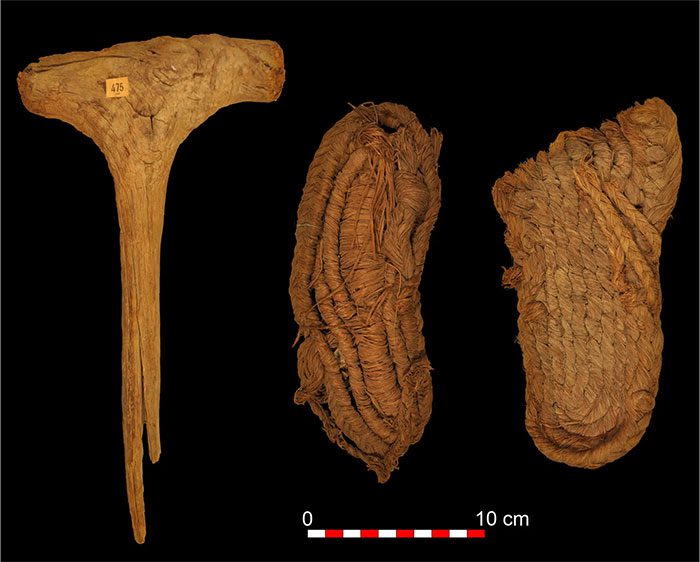Scientists have reported that two sandals discovered in a cave in Spain are 6,200 years old, making them the oldest woven grass sandals ever found in Europe, challenging “simple assumptions” about human ancestors.
This information was presented by a team of experts studying 76 artifacts that were found many years ago in the Cueva de los Murciélagos (Bat Cave) in southern Spain, as reported by CBS News on September 29.

Wooden mace (left) and 2 sandals discovered in Spain. (Photo: MUTERMUR PROJECT).
Researchers from the University of Alcalá and the Autonomous University of Barcelona stated that these artifacts provide the first direct evidence of basket weaving in hunter-gatherer societies and early agricultural communities in southern Europe.
Among the found artifacts were baskets, sandals, and tools made from reeds and esparto grass specifically used for weaving. The researchers noted that of the two sandals discovered, one had a sturdy woven sole while the other featured a harder core.
By studying the raw materials used to create these items, the researchers were able to date them to the early and mid-Holocene, approximately 9,500 to 6,200 years ago.
“The quality and technological complexity of weaving raises questions about the simple assumptions we previously held regarding human communities before agriculture emerged in southern Europe,” said researcher Francisco Martinez Sevilla from the Prehistory Department at the University of Alcalá.
Expert Maria Herrero Otal, a co-author of the study, mentioned that this new discovery offers a unique opportunity to explore the social aspects of early human groups, as this type of fiber material is rarely preserved at archaeological sites.
According to the researchers, the low humidity combined with the dry, cool winds inside the cave helped prevent bacterial growth, allowing the fiber artifacts to survive for millennia.


















































